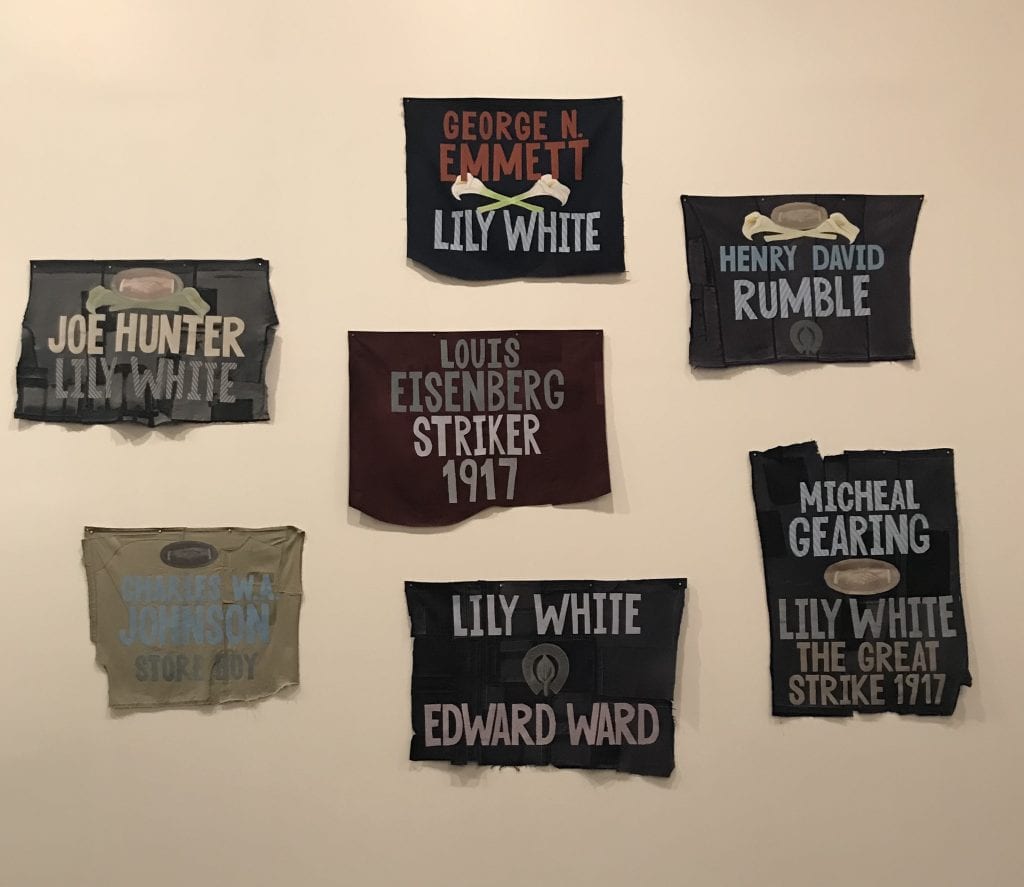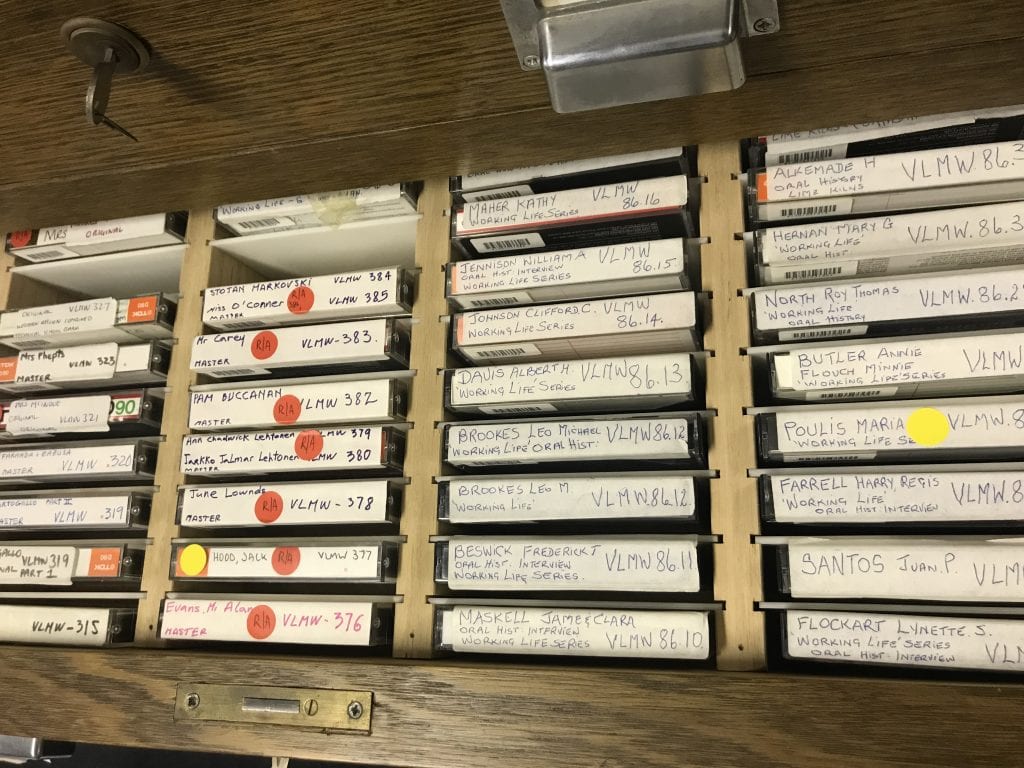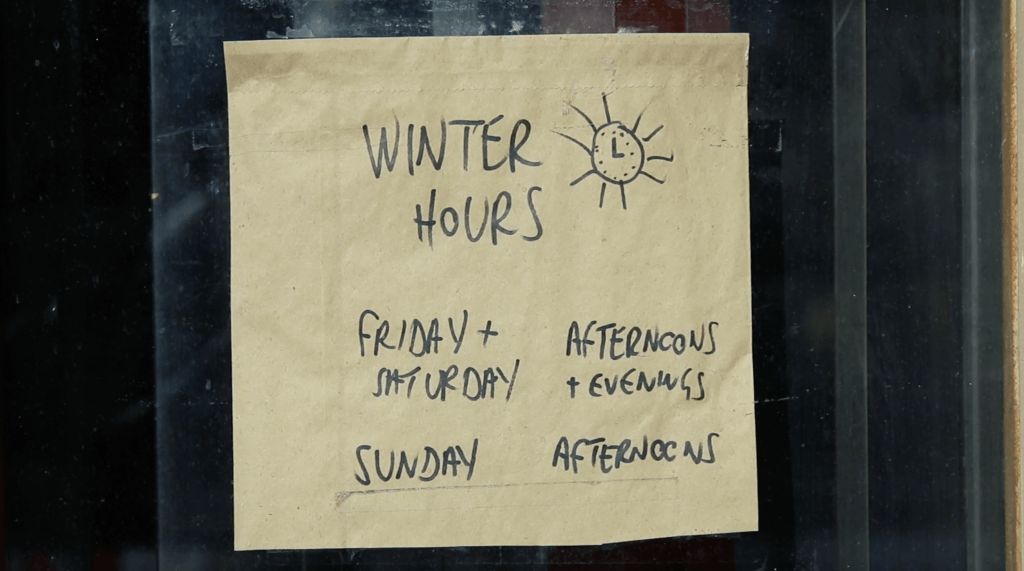The making of ‘Hume at Maribyrnong’ for assignment two was heavily influenced by research I have been undertaking throughout the last few weeks. From around week two I had identified that my interests surrounding the west were industrial labour and migrant communities. When we visited the museum and I learned about the history of pipe maker’s park and the Hume pipe company, this piqued my interest further.
I attended the ‘state of the union’ exhibition at Ian Potter Museum and this was key both for finding inspiration and educating myself on unionisation and labour movements. There were parallels between some of the artist’s work and what I had learned about Hume pipe company. Artist Tully Moore had been inspired by the community nature of the former electrolux factory in Orange, New South Wales, and this was also something I was struck by in learning about Hume.
Throughout making the videos our group had identified a major theme which we were all interested in – migrant groups in the western suburbs and their experiences. Liam had identified an interest in Irish immigrants, while Harriet was intrigued by the Vietnamese community in Footscray. Zitong was generally interested in immigration and I had been interested in the Italian and Greek pipe working community in the 1950s and 60s. Identifying this theme helped us all to focus on our own subjects while also being interested in the other’s videos.
While it was helpful to bounce off one another’s ideas and get feedback from each other, I found this assignment difficult to do in a group environment because to some degree everyone was interested in exploring their own topic. It was hard to be cohesive as a result. However, I think that Zitong and I worked well in producing ‘Hume at Maribyrnong’ particularly with filming and editing, and collaborating with Liam and Harriet also helped me to find inspiration with the similar themes that emerged from our projects.
I learnt a lot about Hume pipe company generally, which I have outlined on my blog. The studio also allowed me to be privy to short documentary works which used montage. I definitely learnt more about the affordances that montage allows. A clip from the film Sans Soleil (1983) was helpful in seeing an example of how text can be used onscreen. This is used in a similar way in another clip from Toungues Untied (1989).
Something that worked well throughout this process was that Zitong and I were able to identify different topics we could explore with our film, all related to Hume. These were the history of the company generally, the social aspect of working at the factory, and the reality of industrial accidents and working conditions. These were all quite interesting aspects which made our video multifaceted, but obviously, with the 90 second time limit, I am not sure if these ideas are effectively communicated in the video. We could only dedicate about thirty seconds to each, so there is a lot of information and content packed into there, and this effects the pacing as a result.
I also struggled somewhat with working with this video as a montage, as it does involve a certain level of creativity when it comes to combining shots and audio. In future, I would have been more experimental with this. I think the issue was that we wanted to introduce what exactly the Hume pipe company was. It may have been a more interesting video if we just launched into the lives of the workers without the background information about Hume. We also strayed somewhat from talking specifically about the prominence of the Italian community at Hume, perhaps because of the short nature of the video. However, I did get to try out some things I haven’t done before – using still images within a film, combining stills with videos in the same shot, and collating together different music and sound effects.
Definitely though, what worked well was the research aspect of this project. The museum had some great sources about Hume, including images as well as online publications like the conservation report which formed the basis of the on-screen text. In addition, I looked online on the national library’s website to find old newspaper articles related to Hume. I quite liked being able to compile this different information, and being able to collate it together within the film to juxtapose images together particularly at the end of the video.
In regards to what I’m looking to do next, I was influenced by Broderick’s writing on ethnography in documentary, noting that “representing an unfamiliar or foreign realm comes with logistical and representational challenges tied to ethnography, ethics, and power” (p. 10, 2017). Indeed I have felt a bit uncertain in representing the western suburbs as I have been unfamiliar with the area previous to this studio. However, coming from an Italian migrant background I was quite drawn to exploring the history of the pipe maker’s park upon learning about the demographics of Hume pipe company’s employees specifically. This is something that I feel a personal draw to and I think it will inform what is next for me in regards to the next assignment and my major work.
As I was researching Hume pipe company, I wasn’t able to find much outside of the museum’s resources about the lives of the migrant employees. However, I did come across some information on the Maribyrnong migrant hostel which mentioned the difficulties that Italian immigrants faced in finding employment upon coming to Australia. I’m keen to digitise some audio tapes from the museum which are accounts of Italian Hume pipe employees, and I feel this will relate to my interest in ‘unskilled’ migrant labourers and their experience in the industrial workforce. I feel that these themes will inform my work in this studio going forward, hopefully within the form of a documentary film, whether that be one long piece or a few shorter pieces collated together.
References
California Newsreel (2013). Tongues United. Available at: https://www.youtube.com/watch?time_continue=1&v=tWuPLxMBjM8 [Accessed 5 Aug. 2018].
Ford, O. and Vines, G. (1996). Pipemakers Park Maribyrnong Conservation Analysis. 1st ed. [ebook] Melbourne: Melbourne’s Living Museum of the West, pp.vi, 80 – 85. Available at: https://www.livingmuseum.org.au/download%20pdf/PipmakersParkConservationAnalysis1996.pdf [Accessed 5 Aug. 2018].
Fox, B. (2017). Reimagining Documentary. In: B. Fox, ed., Documetary Media: History, Theory, Practise. [online] Routledge, pp.1 – 26. Available at: https://ebookcentral.proquest.com/lib/RMIT/reader.action?docID=5103711&query= [Accessed 9 Aug. 2018].
Rittmayer, A. (2014). Sans Soleil opening clip. Available at: https://www.youtube.com/watch?v=aaDaGtM6xWU [Accessed 4 Aug. 2018].
State of the Union (2018), Ian Potter Museum of Art, 24 July to 28 October 2018



